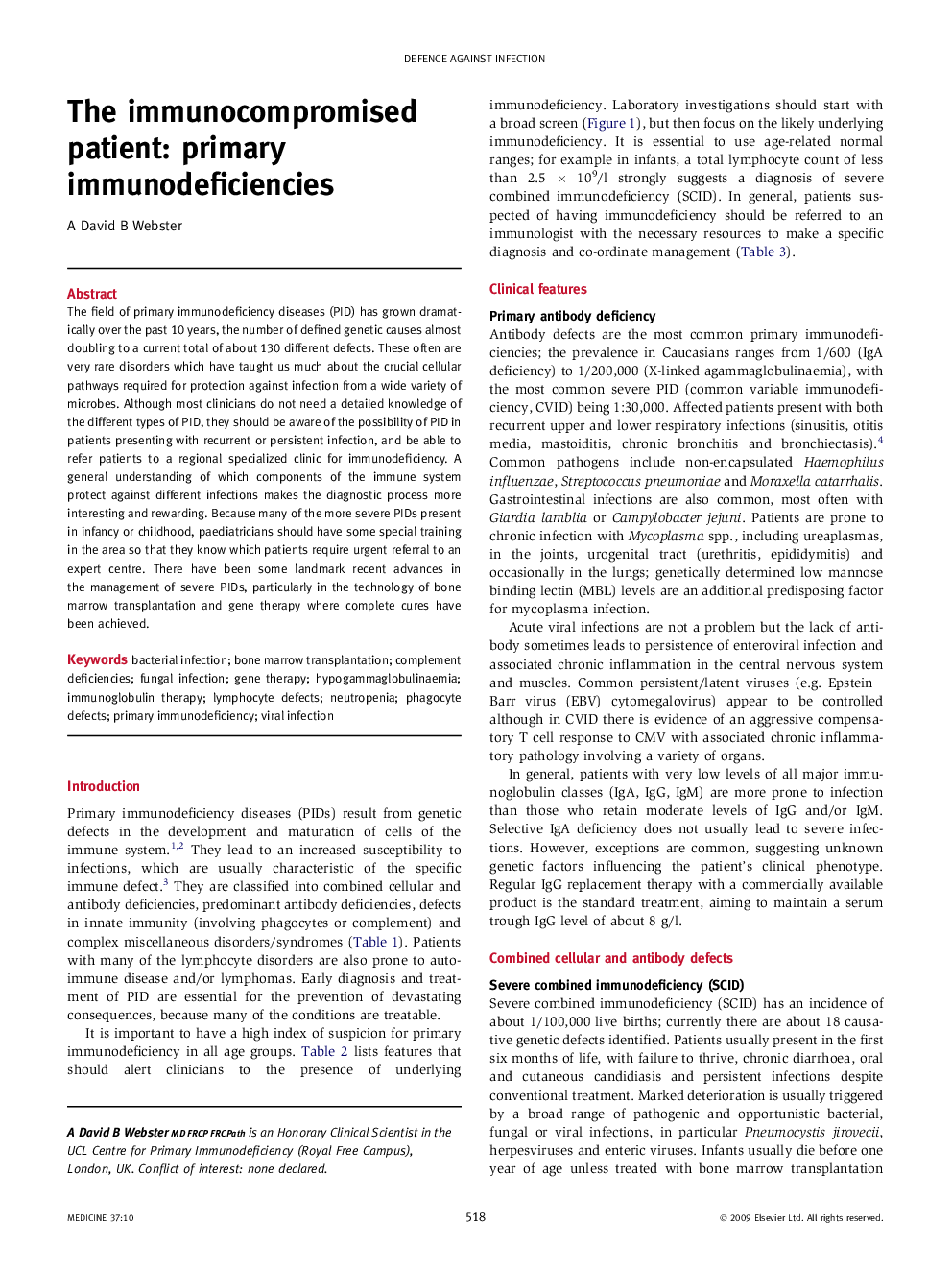| Article ID | Journal | Published Year | Pages | File Type |
|---|---|---|---|---|
| 3807690 | Medicine | 2009 | 4 Pages |
The field of primary immunodeficiency diseases (PID) has grown dramatically over the past 10 years, the number of defined genetic causes almost doubling to a current total of about 130 different defects. These often are very rare disorders which have taught us much about the crucial cellular pathways required for protection against infection from a wide variety of microbes. Although most clinicians do not need a detailed knowledge of the different types of PID, they should be aware of the possibility of PID in patients presenting with recurrent or persistent infection, and be able to refer patients to a regional specialized clinic for immunodeficiency. A general understanding of which components of the immune system protect against different infections makes the diagnostic process more interesting and rewarding. Because many of the more severe PIDs present in infancy or childhood, paediatricians should have some special training in the area so that they know which patients require urgent referral to an expert centre. There have been some landmark recent advances in the management of severe PIDs, particularly in the technology of bone marrow transplantation and gene therapy where complete cures have been achieved.
